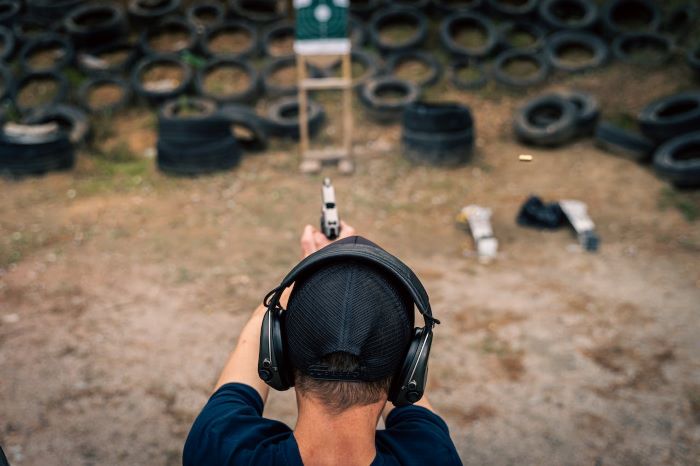When it comes to carrying a firearm, selecting the right holster is as crucial as choosing the firearm itself. A perfect gun holster not only ensures safety but also provides comfort, accessibility, and concealment. Here’s a comprehensive checklist to help shooters find the ideal holster for their needs.
- Determine the Purpose: The first step is to identify the primary use of the holster. Are you looking for a holster for everyday concealed carry, home defense, competitive shooting, or law enforcement duty? Each purpose demands different features in a holster.
- Type of Holster: There are several types of holsters to consider:
- Inside-the-Waistband (IWB): Ideal for concealed carry, IWB holsters sit inside the pants, minimizing the weapon’s visibility.
- Outside-the-Waistband (OWB): Common for open carry, OWB holsters are more comfortable and easier to draw from.
- Shoulder Holsters: Suitable for those who spend a lot of time sitting or driving.
- Ankle Holsters: Best for backup guns.
- Pocket Holsters: Designed for small firearms and deep concealment.
- Alien Holsters: Alien Holsters, known for their innovative designs and customizability, they offer a unique blend of comfort and functionality.
- Material: Holsters are typically made from leather, nylon, or Kydex.
- Leather: Traditional and comfortable, leather holsters mold to the shape of the gun and the wearer’s body over time.
- Nylon: Generally cheaper, lighter, and offer more flexibility.
- Kydex: A rigid plastic that offers excellent retention and durability, but may wear the firearm’s finish over time.
- Retention: Retention refers to how securely the holster holds the firearm. A good holster should have adjustable retention to ensure the gun stays in place but can be drawn without excessive force.
- Comfort: Comfort is key, especially for holsters intended for all-day wear. The holster should not pinch, rub, or press against the body uncomfortably.
- Concealment: For concealed carry, the holster should keep the firearm out of sight without printing (the outline of the gun being visible through clothing).
- Accessibility: The holster should allow for a quick and natural draw. It’s important to practice drawing from the holster to ensure you can access your firearm efficiently in an emergency.
- Adjustability: Look for holsters with adjustable cant (angle) and ride height. This adjustability allows you to position the holster in the most comfortable and accessible way.
- Compatibility with Clothing: Consider the types of clothing you typically wear. Some holsters work better with certain clothing styles and belts.
- Quality and Craftsmanship: A well-made holster will last longer and provide better functionality. Check the stitching, material quality, and overall craftsmanship.
- Safety: Ensure that the holster covers the trigger guard completely to prevent accidental discharge.
- Price: While you shouldn’t compromise on quality and safety, there are good holsters available across various price ranges.
- Reviews and Recommendations: Read reviews and ask for recommendations from experienced shooters. Personal experiences can provide valuable insights.
- Trial and Adaptation: Finally, be prepared to try a few holsters before finding the perfect one. Your comfort and proficiency with the holster will also improve with practice and use.
In conclusion, finding the perfect gun holster involves a balance of safety, comfort, accessibility, and personal preference. By carefully considering each point on this checklist, shooters can select a holster that not only fits their firearm but also their lifestyle and needs. Remember, the right holster is a crucial component of responsible and effective firearm ownership and use.

